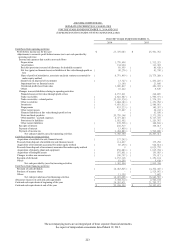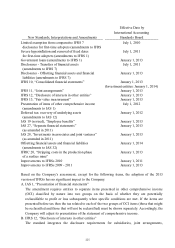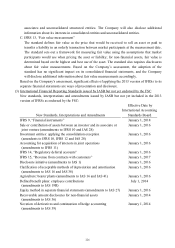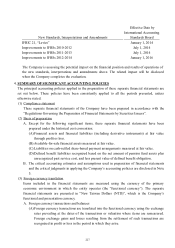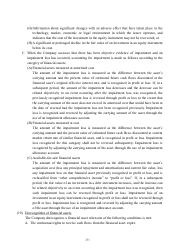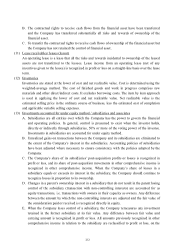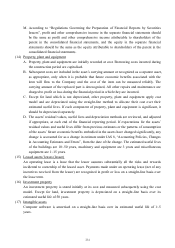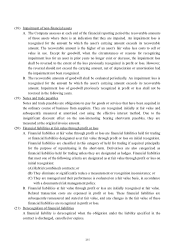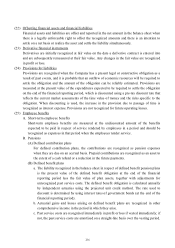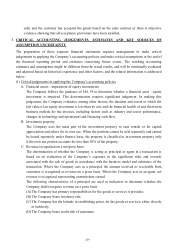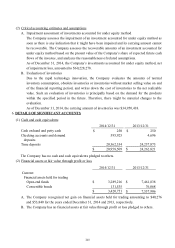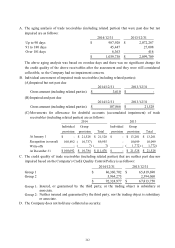Asus 2014 Annual Report Download - page 237
Download and view the complete annual report
Please find page 237 of the 2014 Asus annual report below. You can navigate through the pages in the report by either clicking on the pages listed below, or by using the keyword search tool below to find specific information within the annual report.233
same basis as would be required if the related assets or liabilities were disposed of. That is,
other comprehensive income in relation to the subsidiary should be reclassified to profit or
loss.
F. Associates are all entities over which the Company has significant influence but not control.
In general, it is presumed that the investor has significant influence, if an investor holds,
directly or indirectly 20% or more of the voting power of the investee. Investments in
associates are accounted for under equity method and are initially recognized at cost.
G. The Company’s share of its associates’ post-acquisition profits or losses is recognized in
profit or loss, and its share of post-acquisition movements in other comprehensive income is
recognized in other comprehensive income. When the Company’s share of losses in an
associate equals or exceeds its interest in the associate, including any other unsecured
receivables, the Company does not recognize further losses, unless it has incurred legal or
constructive obligations or made payments on behalf of the associate.
H. When changes in an associate’s equity are not recognized in profit or loss or other
comprehensive income of the associate and such changes do not affect the Company’s
ownership percentage of the associate, the Company recognizes change in ownership
interests in the associate in “capital surplus” in proportion to its ownership.
I. Unrealized gains on transactions between the Company and its associates are eliminated to
the extent of the Company’s interest in the associates. Unrealized losses are also eliminated
unless the transaction provides evidence of an impairment of the asset transferred.
Accounting policies of associates have been adjusted where necessary to ensure consistency
with the policies adopted by the Company.
J. In the case that an associate issues new shares and the Company does not subscribe or
acquire new shares proportionately, which results in a change in the Company’s ownership
percentage of the associate but maintains significant influence on the associate, then “capital
surplus” and “investments accounted for under equity method” shall be adjusted for the
increase or decrease of its share of equity interest. If the above condition causes a decrease in
the Company’s ownership percentage of the associate, in addition to the above adjustment,
the amounts previously recognized in other comprehensive income in relation to the
associate are reclassified to profit or loss proportionately on the same basis as would be
required if the relevant assets or liabilities were disposed of.
K. Upon loss of significant influence over an associate, the Company remeasures any
investment retained in the former associate at its fair value. Any difference between fair
value and carrying amount is recognized in profit or loss.
L. When the Company disposes its investment in an associate and loses significant influence
over this associate, the amounts previously recognized in other comprehensive income and as
capital surplus in relation to the associate, are reclassified to profit or loss, on the same basis
as would be required if the relevant assets or liabilities were disposed of. If it still retains
significant influence over this associate, then the amounts previously recognized in other
comprehensive income and as capital surplus in relation to the associate are reclassified to
profit or loss proportionately.


